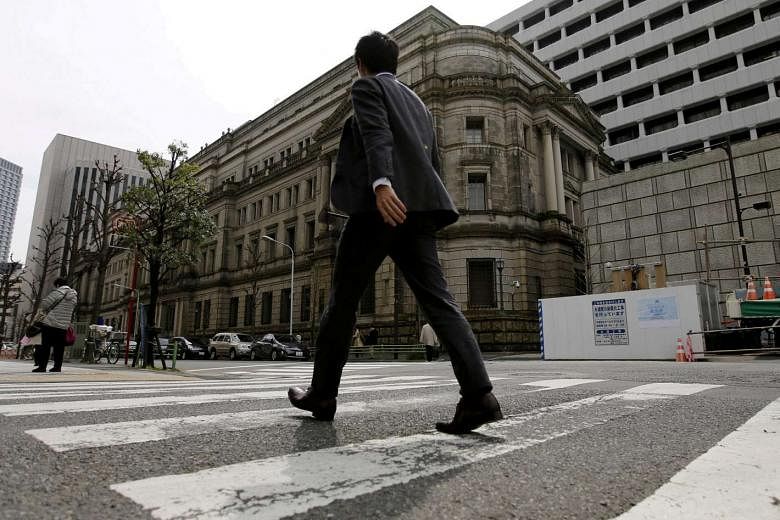TOKYO (REUTERS. BLOOMBERG) - In a surprise move, the Bank of Japan on Wednesday (Sept 21) decided to adopt a target for long-term interest rates, overhauling its policy framework and recommitting to reaching its 2 per cent inflation target as quickly as possible.
Japanese stocks rallied and the yen weakened in a volatile session after the BOJ move.
At the two-day rate review that ended on Wednesday, the BOJ maintained the 0.1 per cent negative interest rate it applies to some of the excess reserves that financial institutions park with the central bank.
But it abandoned its base money target and instead adopted "yield curve control" under which it will buy long-term government bonds to keep 10-year bond yields at current levels around zero per cent.
Under the new framework that adds yield curve control to its current quantitative and qualitative easing (QQE), the BOJ will deepen negative rates, lower the long-term rate target, or expand base money if it were to ease again, the central bank said in a statement announcing the policy decision.
"The BOJ will seek to lower real interest rates by controlling short-term and long-term interest rates, which would be placed as the core of the new policy framework," it said.
The BOJ also said it would continue to buy long-term government bonds at a pace so that ensures the its holdings increase by 80 trillion yen (S$1.07 billion) per year. BOJ Governor Haruhiko Kuroda will hold a news conference to explain the decision at 3:30 pm Tokyo time (2:30pm Singapore time).
Under QQE, the BOJ has been increasing base money - or the amount of money it prints - at an annual pace of 80 trillion yen. But analysts have said the BOJ will struggle to buy enough bonds in coming years with its huge purchases draining liquidity. It decided in January to add negative rates to QQE.
Financial markets gave the announcement an initial thumbs up with MSCI's broadest index of Asia-Pacific shares outside Japan extending its gains to be up 0.35 per cent on the day compared to 0.23 per cent earlier.
The Nikkei swerved in and out of the red soon after the BOJ policy decision was announced and was last up more than 1 per cent.
Volatility was especially acute in the currency markets with the Japanese yen weakening by as much as 1.2 per cent against the US dollar in choppy trade. It was down 1 per cent to 102.73 versus the greenback as of 6:06 am in London,
Japan's currency has outperformed its developed-market peers this year, surging 18 per cent against the greenback through Tuesday, amid doubts that the BOJ had adequate tools left to revive the economy and raise inflation to 2 per cent. Its decision to cut rates to minus 0.1 per cent in January set off a rout in banking stocks and a flight to the safety of the yen.
"Many people expected the BOJ not to take any action at all, and the yen to strengthen, so we now see many people buying the dollar back," said Kaneo Ogino, director at foreign exchange research firm Global-info Co in Tokyo.
In bond markets, US Treasury yields spiked higher immediately after the decision, as investors apparently seem to believe the BOJ's move to steepen the yield curve will have a ripple effect on other bond markets.
Benchmark 10-year Treasury notes rose to 1.73 per cent compared to 1.69 per cent before the BOJ announcement, though investors were wary of driving them higher before a US Federal Reserve policy decision later in the global day.
Sean Callow, senior currency analyst at Westpac, expects the yen weakness might prove short-lived.
"They do seem open to fresh ideas. But it is hard to see the initial gains in USD/JPY being sustained. Keeping the depo rate at -0.1 per cent and not boosting asset purchases doesn't seem a recipe for yen depreciation," he said.

